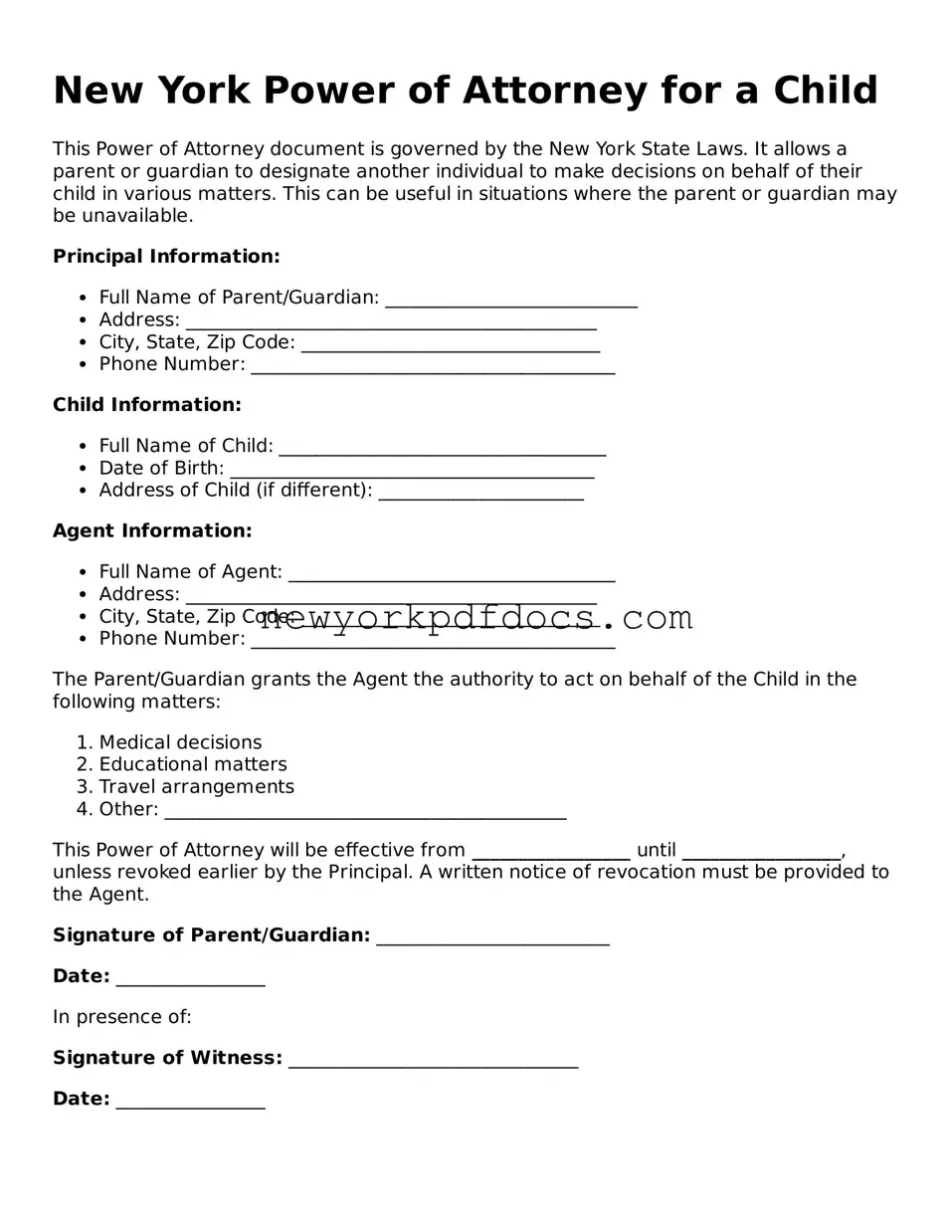New York Power of Attorney for a Child
This Power of Attorney document is governed by the New York State Laws. It allows a parent or guardian to designate another individual to make decisions on behalf of their child in various matters. This can be useful in situations where the parent or guardian may be unavailable.
Principal Information:
- Full Name of Parent/Guardian: ___________________________
- Address: ____________________________________________
- City, State, Zip Code: ________________________________
- Phone Number: _______________________________________
Child Information:
- Full Name of Child: ___________________________________
- Date of Birth: _______________________________________
- Address of Child (if different): ______________________
Agent Information:
- Full Name of Agent: ___________________________________
- Address: ____________________________________________
- City, State, Zip Code: ________________________________
- Phone Number: _______________________________________
The Parent/Guardian grants the Agent the authority to act on behalf of the Child in the following matters:
- Medical decisions
- Educational matters
- Travel arrangements
- Other: ___________________________________________
This Power of Attorney will be effective from _________________ until _________________, unless revoked earlier by the Principal. A written notice of revocation must be provided to the Agent.
Signature of Parent/Guardian: _________________________
Date: ________________
In presence of:
Signature of Witness: _______________________________
Date: ________________
